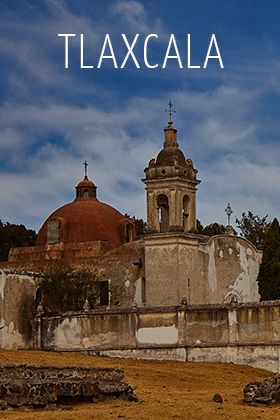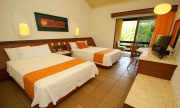Description
The second city in size and population in the State of Michoacan is Uruapan (after the capital, Morelia). The name Uruapan derives from the Purépecha word Ulhapani, meaning "place of eternal formation and fertility", by what many consider as The Orchard of Michoacán. You could say that Uruapan is the gateway to the Purépecha Plateau (the largest indigenous community representative of the state).
It is also famous for its natural beauty, the typical villages that surround it, and its coffee and avocado production. 52 km west of Patzcuaro, 117 via Tingambato of Morelia, 102 by the highway and 684 kilometers from Mexico City, Uruapan has a warm, humid climate.
Like many cities in Mexico, Uruapan was founded by a priest, Fray Juan de San Miguel, in the year 1533. The great thing about this land is the mixture of Purépecha and Mestizo. Walking through the streets of the region it gives us the opportunity to go into a different world, where women and men wear traditional costumes and traditions are preserved.
Also the artisanship preserves its Purépecha heritage; the lacquers are internationally famous, which is why Uruapan is called the Cradle of Maque, as well as the nearby town of Paracho where there are some of the best guitars in the world. Uruapan was also important on a historical level: during the Independence it hosted the First Congress of Anahuac and later, hosted the statewide powers, being witness to many events that shaped the history of the state.
In this place there is much to see, so it is recommended to plan several days in the region. In the city you can walk to the Plaza of the Martyrs, the market of refreshments, the Temple of San Francisco, the factory of San Pedro and even the narrowest house in the world! The Parque Nacional Barranca in the Cupatitzio Eduardo Ruiz is one of the most beautiful parks of all of Mexico with fountains and waterfalls, romantic bridges and more than one legend to remember.
And speaking of crystalline waters, the Tzaráracua and Tzararacuita, where you can get lost among the vegetation, are a sample of the natural wealth of Michoacán. The famous Huatápera was one of the most well-known hospitals in the State. A place that functioned similarly to the hospitals in Patzcuaro, it was a place for meetings and education for the indigenous peoples, Spaniards and mestizos.
Near Uruapan, there are more chapels founded by the first bishop of Michoacán and benefactor of the Indians, Don Basque Quiroga. Uruapan's nightlife is lively and cheerful.
In addition, around the city there are various relaxation and spa facilities amid trees and meadows. A few kilometers from the city, stands the great volcano Paricutin, which you can climb and explore. The view from the tip of the Colossus is awesome, plus it is possible to visit the old town which was under the lava after the eruption in 1943. This region offers much for the traveler; do not leave without trying the famous avocado (and all derivatives thereof), coffee and other delights of the region.
Michoacán hides various paradises and the region of Uruapan is definitely one of those worth visiting.
Uruapan in history
It is considered that Fray Juan de San Miguel founded the city around 1531, although it is known that there were different ethnic groups settled in the area before the Spanish arrived. The last Caltzontzin (ruler in Purépecha), Tanganxoan II, took refuge for a time in Uruapan, escaping the conquistador Cristobal de Olid. As in other parts of Michoacan state, priests from Spain met the natives of the region who lived far away from the towns where the priests lived. Fray Juan de San Miguel organized indigenous communities and moved into new neighborhoods, baptized them with the names of saints, each with its own center, school and church.
The priests taught them to till the land, make crafts and live in unity and peace. Also they built the famous hospitals, including Huatapera, which can still be admired in the city center. At the time of the Independence of Mexico (1810-1821) in Uruapan, an area where there were several attempts at violence against the Iberian occupation, the First Congress of Anahuac was established. During a visit don Jose Maria y Pavon made to the city, he began to prepare the Constitution of Mexico, enacted in Apatzingan. After the war, in 1831, it was awarded the status of municipality.
On November 28, 1858, Uruapan received the noble title of Uruapan del Progreso. Due to the political problems besetting Valladolid (now Morelia), the state capital was moved to Uruapan in 1863 and remained there until February 18, 1867.
After the War of Reform, there were several clashes in the city. Imperialist Colonel Ramon Mendez, rounded liberal forces of General Arteaga, who was betrayed and trapped in Santa Ana Matlan together with Arteaga, Salazar, Jesus Diaz, Trinidad Villagomez and Juan Gonzalez, and were killed on October 21, 1865. These fighters are known as the Martyrs of Uruapan.



















